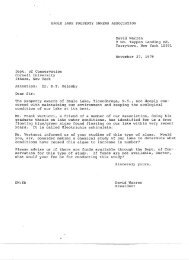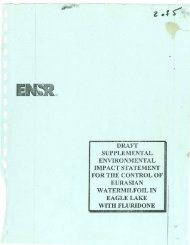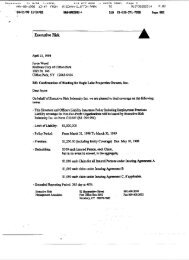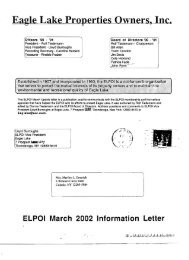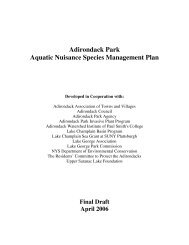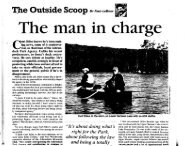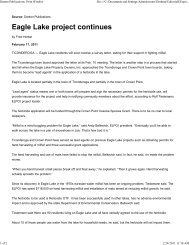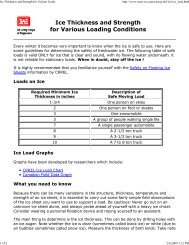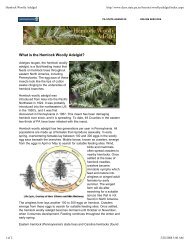Maine Field Guide to Invasive Aquatic Plants - Brant Lake Milfoil ...
Maine Field Guide to Invasive Aquatic Plants - Brant Lake Milfoil ...
Maine Field Guide to Invasive Aquatic Plants - Brant Lake Milfoil ...
You also want an ePaper? Increase the reach of your titles
YUMPU automatically turns print PDFs into web optimized ePapers that Google loves.
2<br />
S u b m e r s e d P l a n t s w i t h S m a l l ( < 5 c m )<br />
U n d i v i d e d L e a v e s A r r a n g e d A l o n g S t e m s<br />
B A C K G R O U N D<br />
1. Leaves are arranged along the stem in strict whorls.<br />
a. Lance-shaped leaves; consistently 3 leaves per<br />
whorl. (See waterweeds, page 50)<br />
b. Generally more than three lance shaped leaves<br />
per whorl. (See Brazilian waterweed, page 36,<br />
hydrilla, page 44, and mare's tail, page 54)<br />
c. Whorls of thin, needle-like "leaves.” “Leaves” may<br />
appear barbed. (See s<strong>to</strong>neworts, page 104 )<br />
2. Leaves are strictly arranged in opposite pairs along the<br />
stem. (See water starworts, page 52)<br />
3. Leaves are alternately arranged. (See pondweeds,<br />
page 96)<br />
4. Slender leaves occur in a mixed arrangement. (including<br />
opposite, whorls, and clusters)<br />
a. Leaves are finely but conspicuously serrated.<br />
Serrations are easily seen with a hand lens. (See<br />
European naiad, page 42)<br />
b. Leaves appear <strong>to</strong> be entire. Serrations are not<br />
easily seen, even with a hand lens. (See native<br />
naiads, page 100)<br />
14 <strong>Maine</strong> Volunteer <strong>Lake</strong> Moni<strong>to</strong>ring Program



